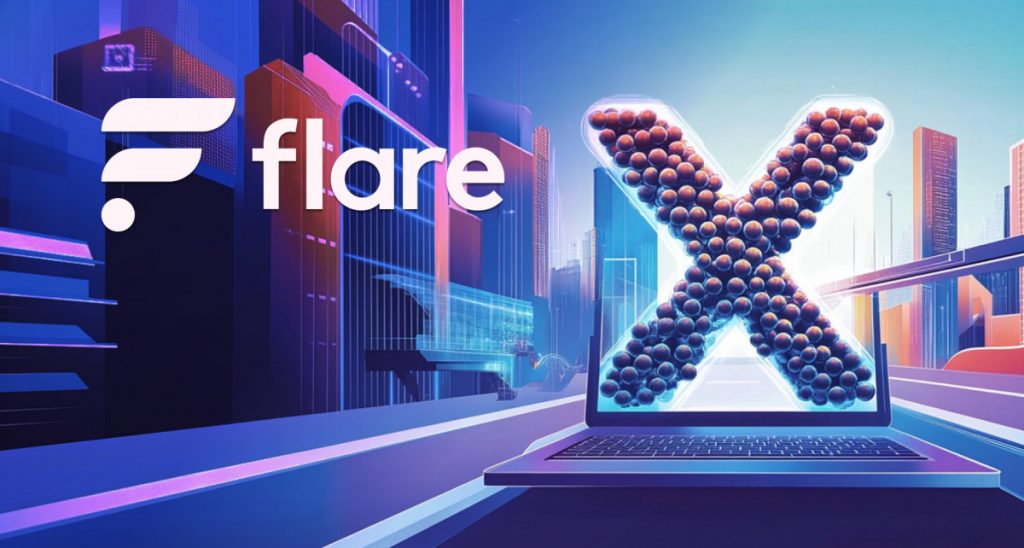XRP’s Next Chapter: How Flare’s FXRP Has Transformed A Payments Token Into A DeFi Asset


In Brief
Flare Network has enabled XRP to enter DeFi through FXRP, a yield-generating representation of XRP, unlocking staking, lending, and liquidity opportunities.

For more than a decade, XRP has carried the reputation of being fast, efficient, and narrowly defined. It was built for payments and cross-border settlement, not DeFi. As newer smart contract chains explored staking, yield strategies, and onchain capital markets, XRP sat on the sidelines, liquid but underutilized. Not anymore.
Flare Network’s FAssets protocol has unlocked a way to bridge XRP into DeFi without wrapping it through a centralized custodian or relying on a third-party intermediary. The result is FXRP, a trustlessly minted representation of XRP that can be used directly on Flare for classic DeFi purposes, including lending, staking, liquidity provision, and novel yield-generating strategies.
And demand is picking up quickly. On November 3, Flare raised the minting cap once again, allowing another 20 million FXRP to be created on the network, after the previous 50M cap filled in a single day. What’s going on over on Flare Network, and does FXRP mark the future of XRP ,or is merely a new use case? Let’s examine the evidence.
From Dormant Liquidity to Active Capital
When Flare launched its mainnet in 2022, it was with the goal of transforming XRP into a versatile asset that could be enhanced using smart contracts that the XRP Ledger couldn’t natively support. By design, the XRP Ledger is optimized for speed and throughput, not programmability. This made it highly efficient for cross-border payments and treasury operations, but limited in terms of yield generation.
Through Flare’s FAssets system, native XRP can be locked on the XRP Ledger while a 1:1 representation – FXRP – is minted on Flare. Think of it as taking cash from a locked drawer and exchanging it for an access card that works everywhere: DeFi apps, liquidity pools, perpetual DEXs – you name it.
It was only in 2025, however, that Flare’s vision of repurposing XRP truly came to life, elevating it into a yield-generating asset that could actually be put to work. In doing so, Flare hasn’t just given XRP new functionality – it’s developed a framework that turns it into programmable capital. And the same FAssets technology is capable of working the same magic on everything from DOGE to BTC.
Once minted, FXRP can be deployed across Flare’s ecosystem: staked for rewards, supplied as liquidity, or used in lending and borrowing markets. An ongoing 2.2 billion FLR rewards program further incentivizes participation, boosting yields across strategies involving FXRP. Unsurprisingly, TVL on Flare is now growing fast.
DeFi Users Load Up on FXRP
In May, as Flare began rolling out FXRP, Total Value Locked (TVL) on the network shot up and has been climbing steadily ever since. There’s now more than $187M of assets on Flare Network, having reached an all-time high this month. XRP isn’t just trickling into the Flare ecosystem: it’s flooding in as DeFi users take advantage of the attractive yield-generating opportunities on offer.
Flare has partnered with a number of leading blockchain developers, including Firelight, to roll out FXRP staking, enabling the creation of an mXRP yield token that further extends the potential for maximizing yield, such as by supplying the asset in liquidity pools. Flare, meanwhile, is following the sort of sustainable yield strategies popularized by the likes of Ethena and Falcon, including delta-neutral trading and lending.
And there’s more to come. As Flare explained in a recent blog post, it is “working with vault curators to bring the borrowing and delta neutral trading on chain, which can be a massive flywheel for people using XRP in DeFi protocols that enable borrow/lend and yield trading. This gives Flare’s TVL potential a massive ceiling.” In other words, it’s just getting started.
Matching Supply and Demand
Flare has been cautious about the amount of XRP it allows to be locked up at any one time and a corresponding amount of FXRP minted, as it builds out its DeFi ecosystem while optimizing for security. The creation of arbitrary cap limits has also served, wittingly or otherwise, to create a high degree of FOMO. Every time the cap is raised, it fills – usually in a matter of hours.
The latest expansion – increasing the FXRP cap and enabling an additional 20 million FXRP to be minted on Flare – is a signal that real demand exists. This suggests XRP holders aren’t merely experimenting, but actively reallocating. The bridging process is fully decentralized and doesn’t rely on a centralized custodian, which is where many previous cross-chain attempts broke down. FAssets use a collateralization-and-auditing mechanism, where independent agents secure the system and ensure FXRP remains fully backed.
Frictionless Retail Onboarding
The infrastructure is only half the story. For DeFi to grow, user experience needs to be painless, which is where recent integrations come into play. Xaman wallet now lets users mint FXRP directly from their native XRP account, allowing them to go from being passive holders to active earners in a couple of clicks.
While retail has been quick to get in on the act, they’re not the only market segment Flare is targeting: institutions are also starting to pay attention. Flare has positioned itself as a chain built for data, with a particular focus on enabling offchain and real-world information to support complex financial operations. Institutional treasury strategies fit neatly into that vision.
Earlier this year, Flare onboarded new capital from entities exploring the use of XRP within DeFi frameworks for staking, lending, and treasury yield optimization. The pitch has resonated, wooing crypto-native businesses with the prospect of deploying XRP without selling it, while maintaining exposure and earning yield.
What began as a bridging experiment now looks like a liquidity migration. XRP was never supposed to be a DeFi token, admittedly, but the market decides what an asset becomes. And right now, the market has decided it likes the FXRP. The potential for XRP to be used for more than merely trading and payments was always there – Flare simply gave it the missing piece.
Disclaimer
In line with the Trust Project guidelines, please note that the information provided on this page is not intended to be and should not be interpreted as legal, tax, investment, financial, or any other form of advice. It is important to only invest what you can afford to lose and to seek independent financial advice if you have any doubts. For further information, we suggest referring to the terms and conditions as well as the help and support pages provided by the issuer or advertiser. MetaversePost is committed to accurate, unbiased reporting, but market conditions are subject to change without notice.
About The Author
Alisa, a dedicated journalist at the MPost, specializes in cryptocurrency, zero-knowledge proofs, investments, and the expansive realm of Web3. With a keen eye for emerging trends and technologies, she delivers comprehensive coverage to inform and engage readers in the ever-evolving landscape of digital finance.
More articles

Alisa, a dedicated journalist at the MPost, specializes in cryptocurrency, zero-knowledge proofs, investments, and the expansive realm of Web3. With a keen eye for emerging trends and technologies, she delivers comprehensive coverage to inform and engage readers in the ever-evolving landscape of digital finance.


















































